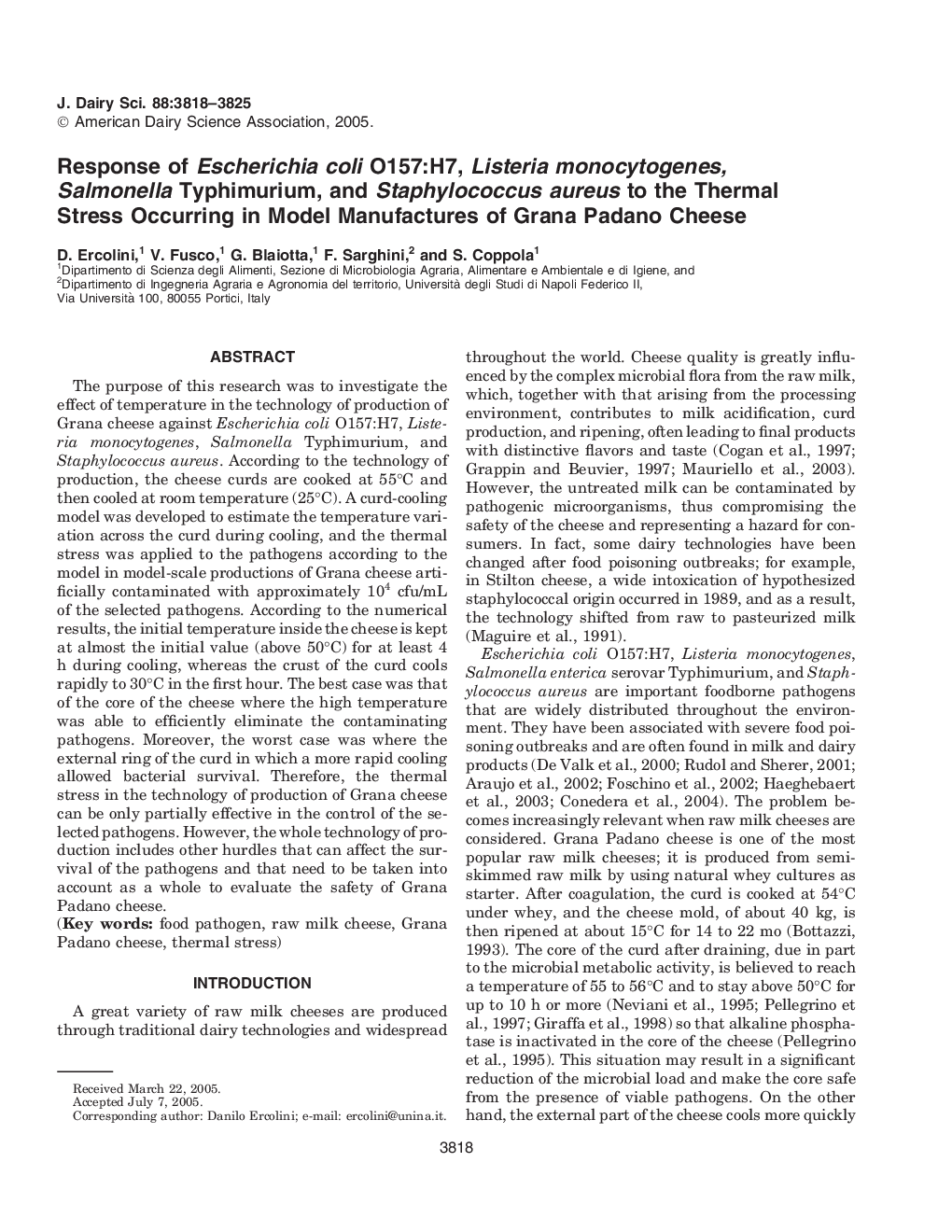| Article ID | Journal | Published Year | Pages | File Type |
|---|---|---|---|---|
| 2441883 | Journal of Dairy Science | 2005 | 8 Pages |
Abstract
The purpose of this research was to investigate the effect of temperature in the technology of production of Grana cheese against Escherichia coli O157:H7, Listeria monocytogenes, Salmonella Typhimurium, and Staphylococcus aureus. According to the technology of production, the cheese curds are cooked at 55°C and then cooled at room temperature (25°C). A curd-cooling model was developed to estimate the temperature variation across the curd during cooling, and the thermal stress was applied to the pathogens according to the model in model-scale productions of Grana cheese artificially contaminated with approximately 104 cfu/mL of the selected pathogens. According to the numerical results, the initial temperature inside the cheese is kept at almost the initial value (above 50°C) for at least 4 h during cooling, whereas the crust of the curd cools rapidly to 30°C in the first hour. The best case was that of the core of the cheese where the high temperature was able to efficiently eliminate the contaminating pathogens. Moreover, the worst case was where the external ring of the curd in which a more rapid cooling allowed bacterial survival. Therefore, the thermal stress in the technology of production of Grana cheese can be only partially effective in the control of the selected pathogens. However, the whole technology of production includes other hurdles that can affect the survival of the pathogens and that need to be taken into account as a whole to evaluate the safety of Grana Padano cheese.
Related Topics
Life Sciences
Agricultural and Biological Sciences
Animal Science and Zoology
Authors
D. Ercolini, V. Fusco, G. Blaiotta, F. Sarghini, S. Coppola,
